#AutoCAD solar design
Explore tagged Tumblr posts
Text
Engineering & Design Services for Solar Projects | EcoSoch
EcoSoch’s Engineering & Design team provides technical site visits, layout preparation, shadow analysis, wind load analysis, AutoCAD drawings & cost analysis

#Engineering and design services#Solar project technical site visit#Solar layout preparation#Shadow analysis solar#Wind load analysis solar#AutoCAD solar design
0 notes
Text
Avoid Costly Mistakes in Solar PV Design with the Right Tool!
The shift toward renewable energy has made solar PV design a crucial aspect of planning and implementing solar power systems. Whether you are a homeowner, installer, or solar engineer, understanding how to design an efficient solar PV system is essential. However, many people struggle with the complexities of the process, including system sizing, shading analysis, and layout optimization.
Fortunately, modern solar design tools can simplify these tasks, making solar PV projects more efficient and error-free. In this microblog, we will explore the key challenges in solar PV design and how the right solar design tool can help overcome them.
What Are the Common Challenges in Solar PV Design?
Designing a solar PV system involves several steps, and many beginners encounter the following challenges:
1. Accurate System Sizing
Choosing the right solar panel capacity to match energy needs is tricky.
Oversizing increases costs, while undersizing leads to power shortages.
2. Site Analysis and Shading Issues
Assessing shading from trees, buildings, and other obstructions is critical.
Poor shading analysis can reduce energy production significantly.
3. Layout Optimization
Arranging solar panels efficiently for maximum sunlight exposure is challenging.
Roof and land constraints make manual layout planning complex.
4. Compliance with Regulations
Solar PV design must adhere to local grid codes and safety standards.
Keeping up with changing regulations is difficult for designers.
5. Time-Consuming Manual Calculations
Traditional methods involve complex spreadsheets and manual calculations.
This process is prone to errors and takes up valuable time.
How Can a Solar Design Tool Simplify the Process?
A solar design tool automates many of these challenges, making solar PV planning faster, easier, and more accurate. Here’s how:
1. Automated System Sizing
Advanced software calculates the ideal system size based on energy consumption and solar potential.
Prevents underperformance or excessive costs.
2. Advanced Shading Analysis
Uses 3D modeling and satellite imagery to detect shading problems.
Ensures optimal panel placement for maximum sunlight exposure.
3. Smart Layout Planning
AI-powered tools automatically suggest the best panel arrangement.
Takes roof angles, obstructions, and available space into account.
4. Compliance Checking
Built-in regulations help designers stay compliant with local codes.
Reduces risks of approval delays or legal issues.
5. Faster Design Process
Eliminates manual calculations and complex spreadsheets.
Saves hours of work and improves accuracy.
Which Solar Design Tool Should You Use?
There are several solar design tool available, but not all are user-friendly or accurate. A good tool should offer: 1. Easy-to-use interface — No need for advanced technical skills. 2. Accurate shading and energy yield analysis — Based on real-world data. 3. Integration with CAD and other design software — For seamless workflow. 4. Fast and automated design process — Reducing effort and increasing efficiency.
Tools like Virto Solar provide comprehensive features for solar PV design, helping users make data-driven decisions.
Final Thoughts
Designing a solar PV system can be complex, but with the right solar design tool, the process becomes much simpler. Whether you’re a professional installer or a homeowner exploring solar energy, leveraging digital tools ensures efficiency, accuracy, and better project outcomes.
By using automated solar PV design software, you can save time, reduce errors, and create optimal layouts for maximum energy efficiency. Ready to simplify your solar PV design? Start exploring modern design tools today!
#pv design software#solar design tool#solar pv design#solar engineering#solar design software#solar energy#pv design autocad
1 note
·
View note
Text
I.B.1698 MICHAEL [IBM] harrelltut.com Domain of SIRIUS BLACKANUNNAQI.tech Patents 2 iapplelisa.com of CLASSIFIED 1983 iapplelisa.tech Memory Application Configuration [MAC] Languages... Mathematically Engineered [ME] by ANU GOLDEN 9 Ether [MAGE] Tri-Solar Black Sun planetrizq.tech SKY FEDERATION of Astronomical MARS’ [FAM'S] Highly Complex [ADVANCED] Ancient Cosmic Algorithmic [CA] Computational [Compton] STAR WEB GATEWAY Language Algorithms [L.A.] Digitally Embedded w/Astronomical [DEA] DNA Markup Language Software from Astronomical MERCURY’s [SAM’s] ibmapple1984.tech Secure Socket Layer Virtual Private Network [SSL VPN] Communications.gov Privately Managed [PM] by ANU GOLDEN 9 Ether [iAGE] quantumharrell.tech Graphical User Interface [GUI] Domain Compu_TAH [PTAH] of iquantumapple.com Infrastructure as a Service [IaaS] since ibquantumapple.com VISION PRO of 1968 quadrillionharrell.tech Machine Engineering [ME] AutoCAD [MAC] Robotics in Architectural Memory Equipment w/Symmetric Encryptions of Satellite [RAMESES] Broadband Communication [B.C.] quantumharrellmatrix.tech Languages… Computationally Accessing [CA] quantumharrelltesla.tech Education and Copyright Harmonization Act [HA = HARRELL] of 2001 Digital Tech Rights [DTR] Scholastically Engineered Academically [SEA] @ 1921 QUANTUM 2023 HARRELL 2024 TECH 2025 Apple & IBM [A.i.] LLC of ATLANTIS [L.A.] 5000
WELCOME BACK HOME IMMORTAL [HIM] U.S. MILITARY KING SOLOMON-MICHAEL HARRELL, JR.™

i.b.monk [ibm] mode [i’m] tech [IT] steelecartel.com @ quantum harrell tech llc


US ANCIENT [USA] SKY [U.S.] GODS OF ASTRONOMICAL MERCURY ENERGY [GAME] VORTEX GENERATORS 2 OUR INTERPLANETARY POWER [I/P] SYSTEMS of Urani-Atlantis.tech... PRIVATELY COMMUNICATING [PC] ONLINE @ QUANTUMHARRELL.tech Domain LLC

eye 1921steelecartel.tech TITAN of SIRIUS [U.S.] gullahgeecheemilitary.tech WEALTH @ quantum harrell tech llc
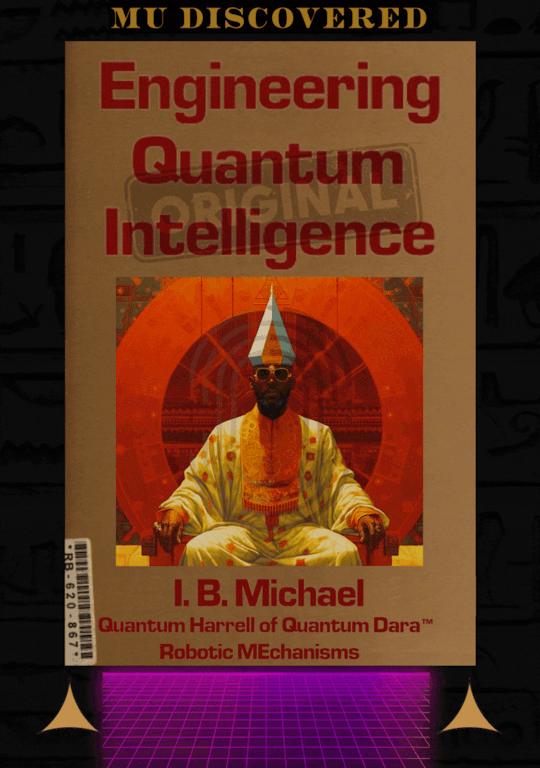
who secretly own apple, inc [a.i.] in 2024?!?!?!

uh oh... not our ancient 9 ether computational algorithm design [cad] patents of SIRIUS electronic architectural intel [a.i.] of Apple [A.I.A] Inc. Patents [I/P] @ 1921 QUANTUM 2023 HARRELL 2024 TECH 2025 Apple & IBM [A.i.] LLC of ATLANTIS [L.A.] 5000?!?!?!

ibmapple1984.tech @ 1921 QUANTUM 2023 HARRELL 2024 TECH 2025 Apple & IBM [A.i.] LLC of ATLANTIS [L.A.] 5000

iapplelisa.com?!?!?!
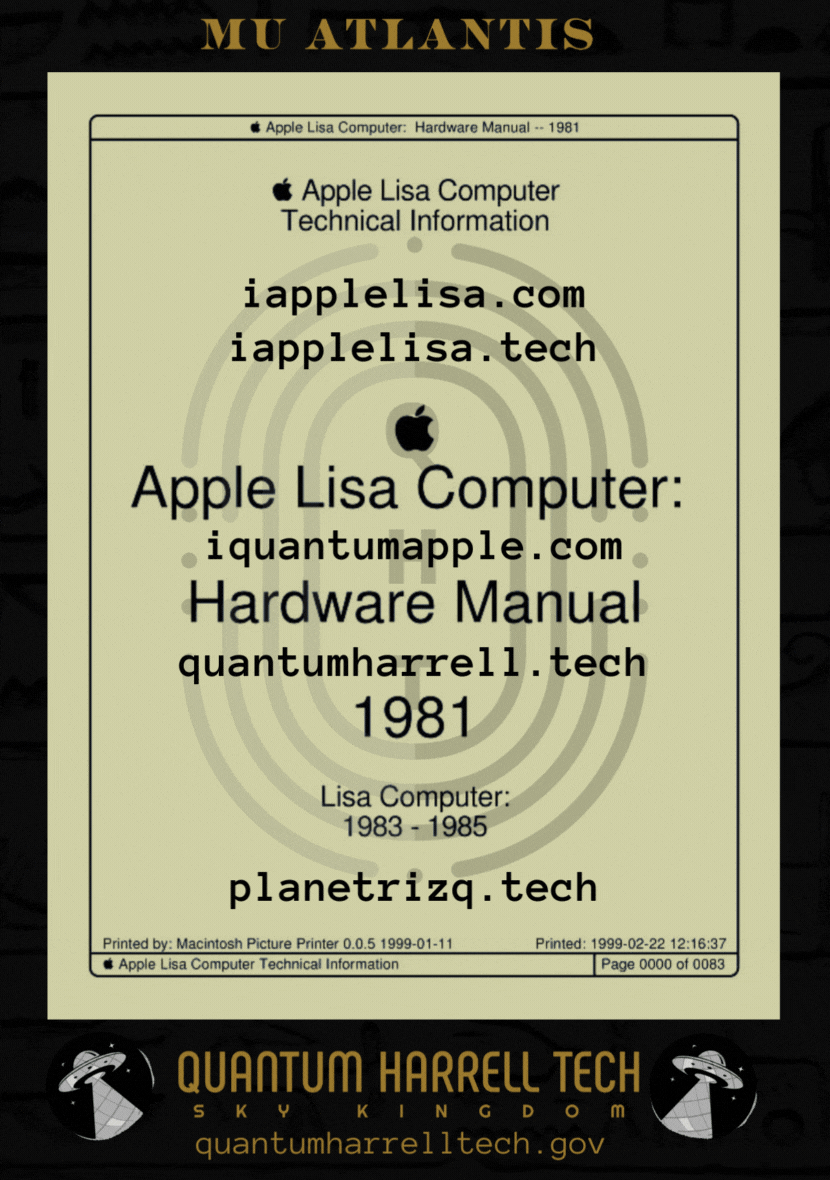
of iapplelisa.tech?!?!?!

but who own iquantumcad.com?!?!?!

ibmautocad.tech memory hardware manual @ 1921 QUANTUM 2023 HARRELL 2024 TECH 2025 Apple & IBM [A.i.] LLC of ATLANTIS [L.A.] 5000?!?!?!
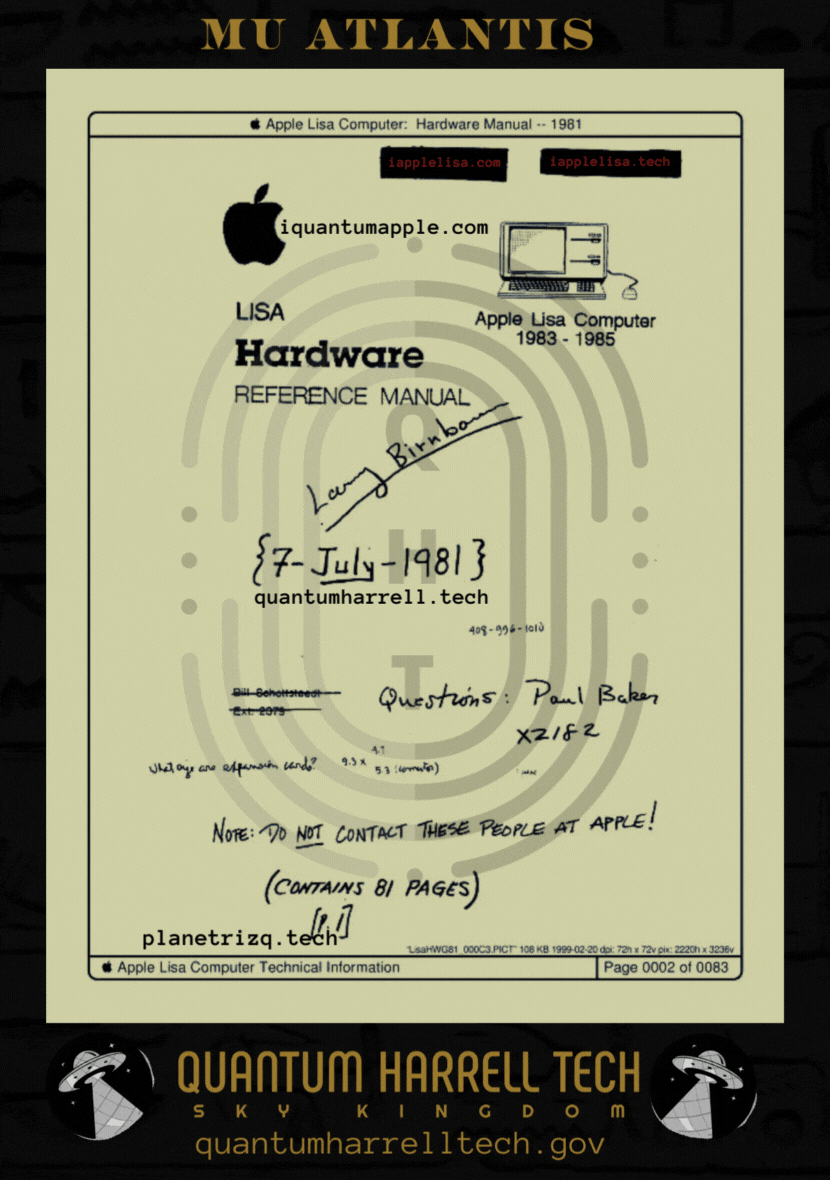
iquantumapple.com of iapplelisa.com @ 1921 QUANTUM 2023 HARRELL 2024 TECH 2025 Apple & IBM [A.i.] LLC of ATLANTIS [L.A.] 5000

MICHAEL A COMPUTER [MAC] APPLE NERD [MAN] of iapplelisa.tech Intel @ 1921 QUANTUM 2023 HARRELL 2024 TECH 2025 Apple & IBM [A.i.] LLC of ATLANTIS [L.A.] 5000
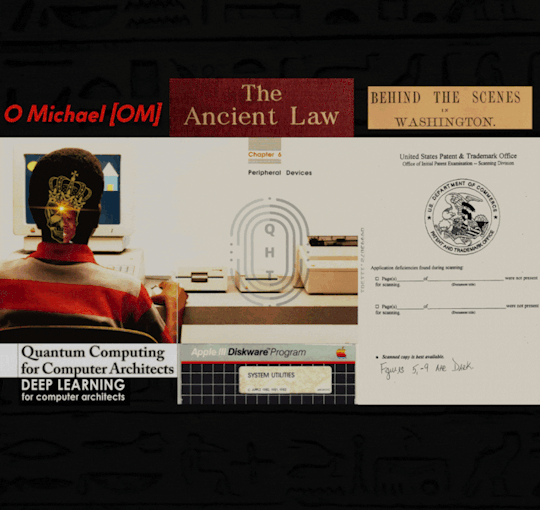
hi:teKEMETICompu_TAH [PTAH] PRO Michael [PM] Harrell, Jr. Deep Machine [DM] VISION Learning @ 1921 QUANTUM 2023 HARRELL 2024 TECH 2025 Apple & IBM [A.i.] LLC of ATLANTIS [L.A.] 5000

CLASSIFIED iapplelisa.tech of iapplelisa.com accessing tri-solar black sun planetrizq.tech PRO of blackanunnaqi.tech VISIONS @ 1921 QUANTUM 2023 HARRELL 2024 TECH 2025 Apple & IBM [A.i.] LLC of ATLANTIS [L.A.] 5000

try the quantumharrelltech.com visual dial tone domain... my personal iphone hung up on you [insert quantumharrell.tech's intellectual encryption phrase property tag]

quantumharrell.tech international [qi] 1921steelecartel.tech family business [dynasty] communication [d.c.] knowledge economy @ 1921 QUANTUM 2023 HARRELL 2024 TECH 2025 Apple & IBM [A.i.] LLC of ATLANTIS [L.A.] 5000
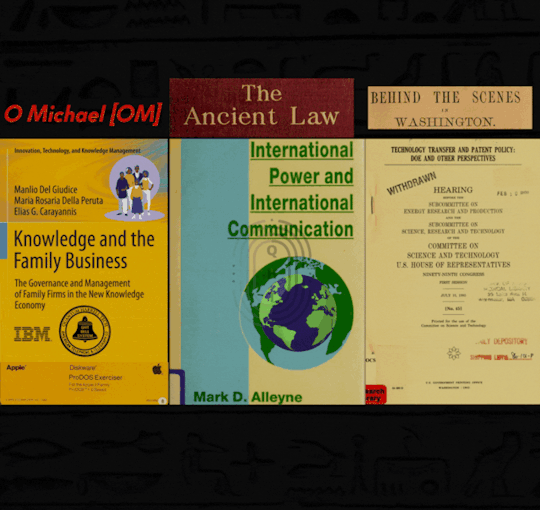
shhh... we 3 sets of 144,000 confidential iapplelisa.tech elites @ 1921 QUANTUM 2023 HARRELL 2024 TECH 2025 Apple & IBM [A.i.] LLC of ATLANTIS [L.A.] 5000
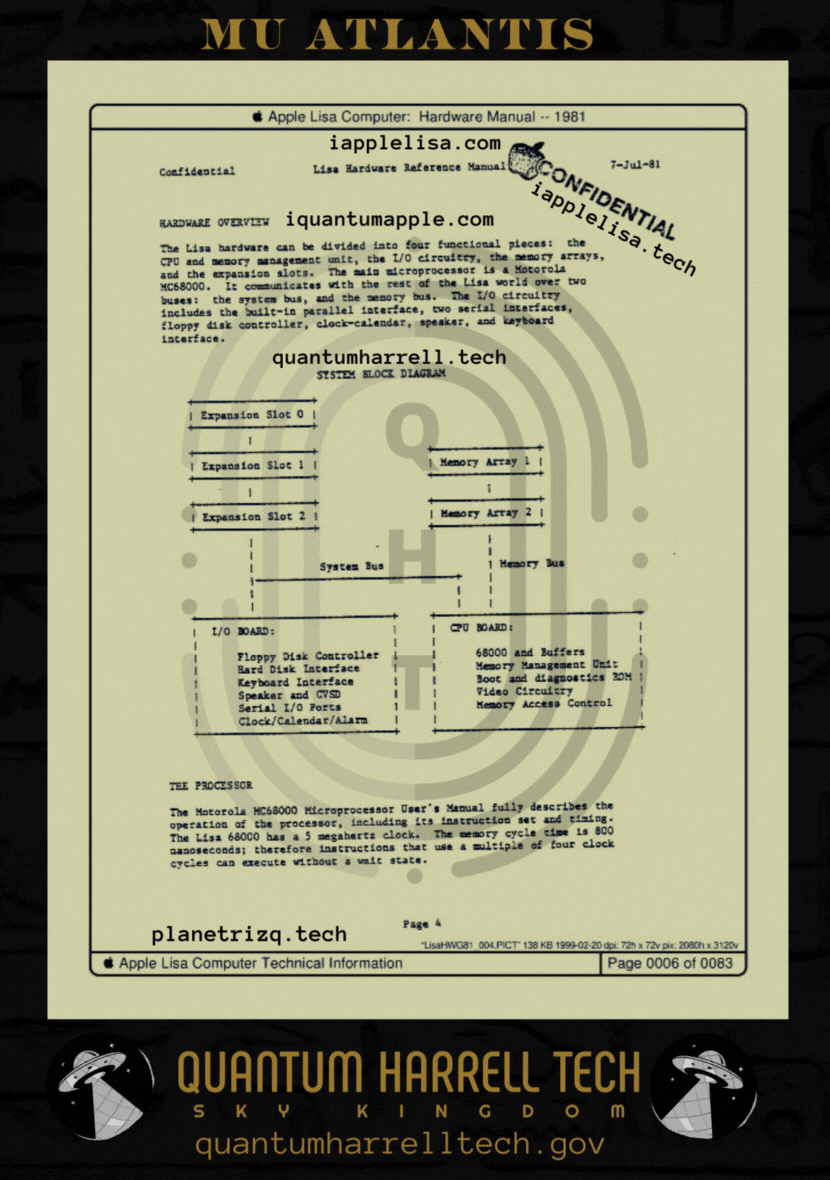
him ancient [ha = harrell] 1921 hi:tekemeticompu_tah [ptah] domain signature technocrat of 1968 planetrizq.tech?!?!?!... says who?!?!?!

says his hi:tekemeticompu_tah [ptah] father michael [fm]... since i.b.1698 michael [ibm] harrell jr @ 1921 QUANTUM 2023 HARRELL 2024 TECH 2025 Apple & IBM [A.i.] LLC of ATLANTIS [L.A.] 5000
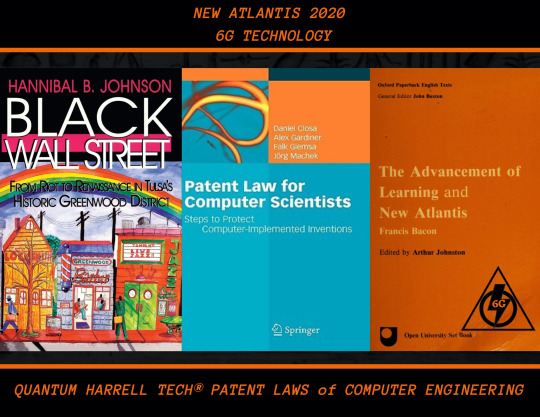
eye anugoldenblackwallstreet.com compu_tah [ptah] business of anu golden 9 ether [age] blackatlantis5000.com economy w/SIRIUS blackatlantis5000.tech WEALTH @ 1921 QUANTUM 2023 HARRELL 2024 TECH 2025 Apple & IBM [A.i.] LLC of ATLANTIS [L.A.] 5000

I.B.1968 MICHAEL [IBM] QUANTUM COMPUTING ANU [CA] quantumharrellmatrix.tech MINING Economy [ME] @ 1921 QUANTUM 2023 HARRELL 2024 TECH 2025 Apple & IBM [A.i.] LLC of ATLANTIS [L.A.] 5000

© 1968-2223 QUANTUM HARRELL TECH LLC All LOST ANCIENT [L.A.] ATLANTEAN DNA [A.D.] DotCom [A.D.] + DotTech [A.D.] + Pre 1698quantumharrellgov.tech Domain Name Rights Reserved.
#apple#ibm#t mobile#at&t#quantumharrelltech#vision pro#apple lisa#quantum dara#qdara.tech#harrelltut.com#u.s. michael harrell#o michael#king tut#intuitive machine learning
2 notes
·
View notes
Text
Importance of Electrical Layout Plans in Modern Architecture
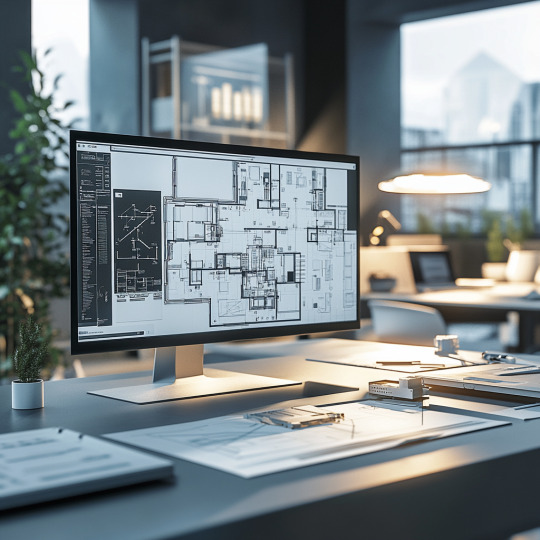
Modern architecture isn't just about stunning facades or innovative materials; it’s also about what lies beneath the surface. One critical, yet often overlooked, aspect of architectural planning is the electrical layout. Whether you're designing a cozy residential space, a bustling commercial hub, or a powerful industrial facility, an effective electrical layout plan is the backbone of functional design.
This blog dives deep into what electrical layouts are, why they’re indispensable, and how they integrate with cutting-edge technologies. By the end, you’ll understand their role in creating safer, smarter, and more efficient spaces.
What is an Electrical Layout Plan?
An electrical layout plan is a comprehensive diagram that pinpoints the placement of electrical components within a building. These include wiring paths, sockets, switches, lighting fixtures, and major appliances. Unlike schematic plans, which deal with the system's overall design, layout plans focus on precise physical arrangements.
Key Components of an Electrical Layout Plan:
Wiring Pathways: Shows how electrical wires are routed through the structure.
Sockets and Switches: Determines where power outlets and controls are located.
Lighting Fixtures: Specifies the placement and type of lights (e.g., ambient, task-specific).
Appliances: Identifies the locations of heavy electrical devices like AC units or refrigerators.
Control Panels and Distribution Boards: Ensures proper load management and prevents electrical disruptions.
Tools Used for Electrical Layouts:
Technology has revolutionized how electrical plans are created. Tools like AutoCAD, Revit MEP, and SketchUp Pro are widely used for detailed 2D/3D designs, ensuring precision in modern projects.
Why Electrical Layout is Crucial in Architectural Design
Electrical planning goes beyond aesthetics; it forms the functionality and safety of any building.
Accurate Component Placement
A well-thought-out plan ensures the optimal placement of electrical outlets, switches, and wiring. For example, in interior design, this enables elements like wall-mounted lights and entertainment systems to seamlessly integrate with the room's aesthetics.
Enhanced Space Optimization
Space constraints are common challenges, especially in urban architecture. A smart electrical layout ensures minimal disruption to the design while maximizing functionality.
Prevention of Future Hazards
An accurate electrical layout reduces the risk of circuit overloads, short circuits, or other electrical issues. This minimizes rework during construction and prevents costly repairs later.
Integration with Modern Technologies
The role of electrical layouts has expanded significantly with advancements in technology. Here’s how:
Smart Home Integration
IoT-enabled smart homes are now a reality, requiring high levels of compatibility between electrical systems and connected devices. Electrical plans ensure seamless integration of automation tools like smart lighting, voice-controlled systems, and remote power management, creating a future-ready living space.
Energy Efficiency and Sustainability
Today's focus is on sustainability. Features like LED lighting and solar panels are incorporated within electrical plans to lower energy consumption and reduce environmental impact without compromising on efficiency.
Advanced Planning with BIM and AI
Building Information Modeling (BIM) combines 3D modeling with precise electrical layouts, enhancing collaboration among architectural and engineering teams. Artificial Intelligence (AI) helps predict energy requirements and optimize designs for better efficiency.
Ensuring Safety and Compliance
Electrical layouts aren’t just about function; they’re critical for safety too.
Adherence to Codes and Standards
Every electrical system must align with local and international codes, such as the National Electrical Code (NEC) or Indian Standard (IS) Codes. These regulations ensure uniformity, safety, and quality in electrical installations.
Emergency Planning
From fire alarms to power backup systems, emergency provisions must be part of the electrical layout plan. This is especially vital in high-occupancy buildings like offices, schools, and shopping complexes.
Overload Protection
Innovative designs incorporate features like grounding systems and circuit breakers to protect against power surges, reducing the risk of fires and equipment damage.
Electrical Layout in Different Building Types
Different structures demand unique electrical requirements. Here's how electrical layouts adapt:
Residential Projects
Comfort and convenience are top priorities in homes. Electrical layouts factor in ambient lighting setups, modular kitchens, entertainment zones, and energy-saving solutions.
Commercial Buildings
Commercial facilities require efficient load management due to complex lighting, HVAC systems, and escalators/lifts. Electrical plans also allow scalability for future expansion.
Industrial Facilities
Industrial buildings rely on heavy-duty equipment, requiring designs that can handle high power loads while incorporating advanced safety measures.
Cost and Time Efficiency
An upfront investment in a well-crafted electrical layout plan saves significant costs and hassle down the line.
Prevents Delays
Electrical rework is one of the leading causes of construction delays. A precise plan ensures the first installation is correct, keeping timelines on track.
Budget-Friendly Planning
With accurate layouts, developers know how much wiring, fixtures, and appliances will be needed from the start, avoiding unnecessary expenses.
Reduces Errors
Detailed plans minimize human errors during implementation, ultimately reducing unrecoverable costs for replacements or repairs.
Collaboration Across Teams
Creating an electrical layout plan is not a one-person job. It requires effective teamwork.
Coordination for Harmony
Architects, interior designers, and MEP (Mechanical, Electrical, and Plumbing) engineers must collaborate to ensure structural integrity aligns with electrical configurations.
Documentation and Approvals
Detailed diagrams and relevant compliance documents streamline the approval process during various stages of construction, ensuring no detail is missed.
Empowering Modern Architecture with Electrical Layout Plans
Electrical layout planning is no longer a last-minute thought; it stands as a foundational element of modern architecture. When integrated with technology and customized to each building type, it creates safer, more efficient, and visually seamless spaces that align with today’s standards.
Whether you're an architect, engineer, or developer, investing in proper planning ensures your projects not only meet but exceed expectations. Want expert assistance? Consult our team at Buildiyo��for cutting-edge electrical architecture solutions tailored for perfection.
0 notes
Text
Maximizing Project Value with Decobu’s Engineering Expertise

In today’s competitive construction and development landscape, delivering high-quality projects while keeping costs under control is a top priority for builders, property developers, architects, project managers, subcontractors, government agencies, and facility owners. At Decobu, we specialize in value engineering — a proven methodology that optimizes project outcomes by balancing functionality, quality, and cost-efficiency. Our expertise in electrical engineering services, mechanical engineering services, hydraulic engineering services, and fire engineering services Australia ensures tailored solutions that maximize value for your projects across Australia.
Why Choose Decobu for Value Engineering?
By partnering with Decobu’s engineering consultants in Melbourne, you gain access to a team of highly skilled professionals who prioritize cost-saving without compromising safety or performance. Our multidisciplinary approach integrates advanced design and engineering principles, leveraging cutting-edge tools and decades of experience across multiple disciplines.
How Decobu Implements Value Engineering
Our process begins with a comprehensive assessment of your project’s goals. Our engineering consultants in Melbourne conduct thorough design reviews to understand your project’s unique requirements. By analyzing budgets, timelines, and objectives, we identify areas where costs can be optimized without sacrificing quality. For example, our electrical design engineer companies use advanced tools like AutoCAD and BIM to create efficient electrical systems tailored to your needs.
Our team at Decobu, including electrical engineering services Adelaide and mechanical engineering consultants Brisbane, works collaboratively to refine designs, recommend cost-effective materials, and streamline construction processes. This ensures that every project delivers maximum value, whether it’s a residential development, commercial building, or industrial facility.
Tailored Solutions for Every Stakeholder
We understand that different stakeholders have unique needs. Here’s how Decobu’s value engineering services cater to each group:
Builders & Construction Companies: Our electrical engineering services Sydney and hydraulic engineers perth deliver cost-effective designs for power distribution, lighting, and plumbing systems.Property Developers: Maximize ROI with energy-efficient solutions like solar PV systems and optimized HVAC designs from our mechanical engineering companies Australia.
Architects & Design Consultants: Collaborate with our fire engineering consultants Melbourne to integrate compliant and innovative fire safety systems.
Project Managers & Consultants: Benefit from our proactive approach to ensure projects stay on schedule and within budget.
Subcontractors & Engineering Firms: Leverage our expertise in electrical engineering projects and fire engineering projects for seamless integration.
Government Agencies & Facility Owners: Ensure compliance with Australian standards through our fire safety engineering Melbourne and engineering services Adelaide.
Benefits of Value Engineering with Decobu
Partnering with Decobu offers numerous advantages:
Cost Reduction: Our electrical engineering consultants and mechanical design engineer Australia identify savings without compromising quality.
Enhanced Efficiency: Streamlined designs from our mechanical engineering design companies reduce construction time and resource use.
Compliance & Safety: Our fire engineering services near me and electrical engineers Melbourne ensure adherence to local regulations.
Sustainability: Incorporate eco-friendly solutions with guidance from our electrical engineering consultants.
Contact Decobu Today
Ready to enhance your project’s value? Whether you’re in Melbourne, Sydney, Perth, Adelaide, or Brisbane, our team — including fire engineering consultants melbourne and electrical engineering services — is here to help. Contact us at [email protected] or visit decobu.com.au to learn more about how our value engineering services can transform your next project.
#hydraulic engineering services#mechanical engineering services#fire engineering services#electrical engineering services
0 notes
Text
Modelmaking for Innovators: A Guide to Creating, Designing, and Building
At Fixie 3D, modelmaking is more than just building miniature versions of objects. It is a creative and technical process used in many industries like architecture, film, education, and engineering. Modelmaking helps turn ideas into physical forms that people can see, touch, and understand better. Whether you're a student, a hobbyist, or a professional, modelmaking can be fun, educational, and even a great career path.

Tools and Techniques in Modelmaking
Modelmaking requires the right tools and techniques to create detailed and accurate models. Depending on the type of model, you might use basic tools like glue, scissors, and rulers, or advanced tools like laser cutters and 3D printers. The techniques used include cutting, shaping, gluing, painting, and assembling parts. High-quality models often need extra steps like weathering and finishing to make them look more realistic.
Common materials: foam board, plastic, resin, wood
Advanced tools: laser cutters, CNC machines, 3D printers
Finishing techniques: painting, sanding, adding details
These tools and methods help modelmakers create everything from tiny dioramas to large-scale architectural prototypes.
Modelmaking in Architecture and Design
Architects and designers use modelmaking to bring their ideas to life before construction begins. These models help show the design of buildings, interiors, and even entire neighborhoods. Architectural models can be simple concept models or highly detailed presentation models. They are made to scale, which means every part of the model is smaller but in the correct proportion.
Types of architectural models: site models, concept models, topographic models
Used in: design planning, client presentations, urban development
Materials: cardboard, acrylic, 3D-printed parts
Modelmaking in architecture is an essential part of the design process and helps in better decision-making and communication.
Modelmaking for Film and Entertainment
In the world of film and entertainment, modelmaking brings imaginary worlds to life. From spaceship miniatures to fantasy landscapes, these models are often used in special effects or stop-motion animation. Prop makers also build realistic replicas of weapons, costumes, and sets. These detailed creations help make movies more exciting and believable.
Used in: sci-fi films, fantasy movies, stop-motion animation
Includes: set design, miniature models, creature models
Common materials: clay, foam, latex, plastic
Modelmaking helps filmmakers create magic on screen while keeping costs lower than full-scale builds.
Educational and Hobbyist Modelmaking
Modelmaking is also popular in schools and as a hobby. It helps students understand science, math, and geography by building models of things like volcanoes, solar systems, or bridges. Hobbyists enjoy building model trains, cars, planes, or dioramas for fun. It teaches patience, attention to detail, and problem-solving skills.
Great for: science fair projects, classroom learning, personal enjoyment
Popular types: model kits, RC vehicles, paper models
Teaches: creativity, hands-on learning, technical skills
Whether you're learning or just having fun, modelmaking is a rewarding and educational activity.
Digital Modelmaking and 3D Printing
Modern modelmaking often includes digital tools. CAD (Computer-Aided Design) software like Blender or Fusion 360 allows users to design models on a computer. These digital files can then be used for 3D printing. This makes it easier to create detailed, accurate, and repeatable models.
Software: AutoCAD, Rhino, Fusion 360, Blender
Output: STL files for 3D printing, laser-cutting files
Benefits: precision, repeatability, time-saving
Digital modelmaking is perfect for prototyping, custom parts, and complex designs that are hard to make by hand.
Modelmaking as a Career
Modelmaking is a real job for many people. Modelmakers work in architecture firms, movie studios, museums, product design companies, and even theme parks. To become a professional modelmaker, you need skills in design, craftsmanship, and sometimes digital modeling.
Workplaces: modelmaking studios, design firms, film production companies
Skills needed: attention to detail, creativity, tool knowledge
Career roles: architectural modelmaker, prop maker, prototype designer
At Fixie 3D, we believe modelmaking is not just about creating models, but about building ideas into reality. It is a creative journey with endless possibilities.
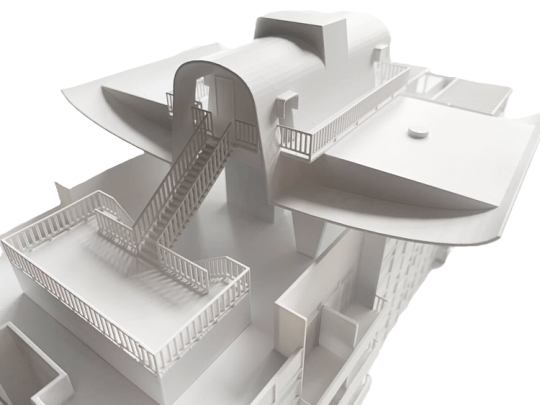
Conclusion
Modelmaking is a powerful way to bring ideas to life. It combines creativity with practical skills and can be used in everything from school projects to professional design and film work. Whether you enjoy working with your hands, love digital design, or dream of working in movies or architecture, modelmaking offers something for everyone. At Fixie 3D, we encourage you to explore the world of modelmaking and discover how rewarding and exciting it can be. It’s more than just building models — it’s building the future, one piece at a time.
0 notes
Text
Off-Site Engineering Services: A Smart Approach to Scalable Innovation

In an increasingly global and fast-paced engineering environment, companies are under constant pressure to innovate quickly, reduce time-to-market, and manage operational costs. One solution that has gained significant traction in recent years is Off-Site Engineering Services. This model allows organizations to outsource specialized engineering tasks to remote teams while maintaining quality, compliance, and project timelines.
Off-site engineering has transformed how businesses approach product development, R&D, and system integration. It provides flexibility, scalability, and access to global talent without the overhead of in-house hiring or infrastructure expansion.
What Are Off-Site Engineering Services?
Off-site engineering services involve delegating design, development, analysis, and support tasks to a dedicated team located outside the client’s physical premises. This team may operate from a different city, state, or country, often functioning as an extension of the client’s internal engineering department.
Services typically provided off-site include:
Product design and development
CAD modeling and FEA analysis
Embedded system design
Control system development
Simulation and testing
Software and firmware development
Documentation and compliance
These services are supported via cloud-based collaboration tools, secure data access protocols, and regular project reviews, ensuring transparency and control.
Key Benefits of Off-Site Engineering Services
✅ Cost Efficiency
Off-site engineering significantly reduces costs associated with full-time staff, training, office space, and tools. Companies can scale engineering resources up or down based on project demand without long-term commitments.
✅ Access to Global Talent
With off-site services, companies can tap into a broad pool of skilled engineers and domain experts across the globe. This access accelerates innovation and ensures technical challenges are handled by specialists.
✅ Faster Time-to-Market
By delegating parallel tasks to off-site teams, in-house engineers can focus on core innovations. This concurrent development approach shortens project timelines and speeds up product launches.
✅ Focus on Core Competencies
Organizations can offload routine or time-consuming engineering tasks and concentrate on strategic initiatives like product differentiation, customer engagement, and business growth.
✅ Business Continuity
Off-site teams can provide backup during employee transitions, holidays, or workload surges. They also ensure project continuity in the face of unexpected disruptions like local resource shortages.
Applications Across Industries
Off-site engineering services are applicable across a wide range of industries, each benefiting from the flexibility and scalability this model offers:
Automotive: Control systems, ECU software, infotainment systems, electric vehicle (EV) architecture, and simulation.
Aerospace: Avionics systems, structural analysis, CAD modeling, and compliance documentation.
Industrial Automation: PLC programming, HMI development, motion control, and system integration.
Medical Devices: Regulatory documentation, embedded software, prototyping, and product design.
Renewable Energy: Solar and wind system modeling, battery management systems, and grid integration support.
Consumer Electronics: IoT device design, firmware development, and wireless communication solutions.
Key Services Offered in Off-Site Engineering
CAD and Product Design
3D modeling, rendering, and drafting using tools like SolidWorks, CATIA, and AutoCAD.
Design for manufacturability (DFM), design reviews, and rapid prototyping support.
Control System Development
PID controller tuning, mechatronics integration, and custom control logic.
Simulation tools like MATLAB/Simulink and LabVIEW for testing and validation.
Embedded Systems and Firmware
Microcontroller programming, real-time operating systems (RTOS), and IoT device firmware.
Protocol integration (CAN, LIN, Modbus, Ethernet).
Testing and Validation
Software-in-the-Loop (SIL), Hardware-in-the-Loop (HIL), and model-in-the-loop (MIL) testing.
Automated test case development and execution.
Simulation and Analysis
Finite Element Analysis (FEA), Computational Fluid Dynamics (CFD), and system-level modeling.
Structural, thermal, and dynamic simulations for design optimization.
Documentation and Compliance
Support for ISO, AS9100, FDA, and other industry-specific compliance documentation.
Technical manuals, BOM creation, and version control.
Off-Site vs. On-Site Engineering: A Comparison
Feature
Off-Site Engineering
On-Site Engineering
Cost Efficiency
High
Moderate to Low
Talent Access
Global
Local/Regional
Scalability
Flexible
Fixed resources
Control and Supervision
Remote, process-driven
Direct, face-to-face
Infrastructure Cost
Minimal for client
High (workspace, equipment)
Collaboration Tools
Digital (Zoom, Slack, etc.)
Physical meetings, systems
While on-site engineering offers direct interaction, off-site engineering provides a cost-effective and scalable model that aligns with modern development cycles and distributed teams.
Best Practices for Successful Off-Site Collaboration
Clear Communication Protocols: Establish regular stand-ups, updates, and feedback loops.
Defined Scope and Deliverables: A clear SOW (Statement of Work) ensures alignment.
Secure Data Handling: Use VPNs, secure servers, and IP protection agreements.
Project Management Tools: Platforms like Jira, Asana, or Trello help track tasks and milestones.
Regular Reviews and QA: Frequent quality checks ensure project progress and adherence to standards.
Why Choose Off-Site Engineering Today?
With remote work now the norm and global collaboration tools more advanced than ever, off-site engineering offers a practical solution for companies aiming to innovate without the traditional limitations of location and infrastructure. Whether you're a startup scaling quickly or an enterprise optimizing operations, off-site engineering can deliver high-quality results with speed and efficiency.
Conclusion
Off-site engineering services at Servotech Inc are revolutionizing how engineering work is done across industries. By providing access to expert talent, reducing costs, and accelerating time-to-market, this model allows businesses to stay competitive in a demanding technological landscape. When executed with strategic planning and the right partners, off-site engineering is not just an outsourcing strategy—it’s a pathway to smarter, more agile innovation.
0 notes
Text
How 3D CAD Helps Engineers Perform Thermal Analysis for Spacecraft

The extreme conditions of space pose significant challenges for spacecraft design, particularly in thermal management. Spacecraft experience fluctuating temperatures, intense solar radiation, and the vacuum of space, all of which can impact performance. Thermal analysis is a critical step in spacecraft engineering, ensuring that systems remain operational under these harsh conditions. One of the most transformative tools in this process is 3D CAD (Computer-Aided Design). By integrating CAD with thermal analysis software, engineers can efficiently simulate, analyze, and optimize spacecraft designs.
The Role of Thermal Analysis in Spacecraft Design
Thermal analysis involves predicting how a spacecraft will behave thermally under various conditions. Engineers use simulations to evaluate heat transfer mechanisms such as conduction, convection (if applicable), and radiation. This process ensures that components stay within their operational temperature limits and identifies the need for heaters, radiators, or insulation layers to maintain thermal balance.
Spacecraft thermal analysis typically includes:
Modeling energy exchange factors: Calculating absorbed energy from orbital sources like the Sun and reflected planetary radiation.
Simulating heat dissipation: Predicting how internal components generate and transfer heat during operation.
Designing control systems: Determining heater power requirements and radiator sizing to regulate temperatures.
How 3D CAD Enhances Thermal Analysis
3D CAD tools revolutionize thermal analysis by enabling engineers to create detailed models of spacecraft geometry. These models serve as the foundation for simulations and allow engineers to visualize complex systems under varying environmental conditions. Here’s how 3D CAD contributes to thermal analysis:
1. Accurate Geometry Representation
Spacecraft designs often involve intricate geometries with multiple subsystems. 3D CAD software allows engineers to create highly detailed models that account for every component's size, shape, and orientation. Tools like NX Space Systems Thermal simplify the modeling of large assemblies without requiring manual geometry conversions. This level of detail ensures accurate predictions during simulations.
2. Integration with Thermal Analysis Software
Modern CAD tools are seamlessly integrated with thermal analysis software such as Thermal Desktop or Simcenter 3D Space Systems Thermal. These integrations enable engineers to import CAD models directly into simulation environments without losing fidelity. For example:
Thermal Desktop uses AutoCAD-based models to compute radiative exchange factors and orbital heating via Monte Carlo methods.
Simcenter 3D synchronizes CAD data automatically, reducing errors and improving efficiency during iterative design processes.
3. Material Property Assignment
Thermal performance depends heavily on material properties like conductivity, emissivity, and specific heat capacity. CAD-based tools often include databases of thermophysical properties, allowing engineers to assign realistic materials to spacecraft components. This capability ensures that simulations reflect real-world behavior.
4. Visualization and Post-Processing
Engineers can use CAD-integrated tools to visualize temperature distributions across spacecraft surfaces in 3D. Features like contour plots or scatter plots make it easier to identify hotspots or areas requiring additional thermal control measures. Visualization enhances collaboration among teams by presenting complex data in an intuitive format.
Applications of 3D CAD in Spacecraft Thermal Analysis
Orbital Simulations
Orbital mechanics significantly influence a spacecraft's thermal environment due to changing positions relative to the Sun and Earth. Engineers use 3D CAD models to simulate these dynamics and predict temperature fluctuations over time. For instance, NX Space Systems Thermal enables orbital simulations with synchronized geometry updates for evolving designs
Component-Level Analysis
Thermal analysis extends beyond the spacecraft as a whole—it includes evaluating individual subsystems like electronics or propulsion units. Tools like Solaria Thermal specialize in finite element analysis (FEA) for detailed component-level simulations. Engineers can model copper layers in PCBs or heat dissipation from rocket engines using these tools.
Iterative Design Optimization
Thermal analysis is an iterative process involving multiple design revisions. With CAD-integrated software, engineers can quickly update models based on simulation results without starting from scratch. This agility accelerates development timelines while improving accuracy.
Benefits of Using 3D CAD for Thermal Analysis
The integration of 3D CAD with thermal analysis software offers several advantages:
Efficiency: Automated synchronization between CAD models and simulation tools reduces manual effort.
Accuracy: Detailed geometry and material property assignments result in more reliable predictions.
Cost Savings: Virtual testing minimizes the need for expensive physical prototypes.
Collaboration: Intuitive visualizations enhance communication among engineering teams.
Conclusion
In the realm of spacecraft engineering, thermal analysis is indispensable for ensuring mission success under extreme conditions. The integration of 3D CAD tools with advanced simulation software has streamlined this process, enabling engineers to design more robust systems efficiently. From orbital simulations to component-level evaluations, these tools provide unparalleled accuracy and visualization capabilities.
As space exploration continues to push boundaries, the role of 3D CAD design services in thermal analysis will only grow more critical, empowering engineers to tackle increasingly complex challenges with confidence. Whether designing satellites for Earth's orbit or interplanetary missions, leveraging these technologies ensures that every spacecraft is prepared for its journey into the unknown.
#Thermal Analysis in Spacecraft Design#Spacecraft Design#Thermal Analysis#3D CAD Design#3D CAD Design Services#3d app development services#3d application development#3d mobile app development#3d desktop application development#3d desktop application#3d desktop application development companies#best 3d application development company#3d engineering application development services#3D application development for engineering#3D development tools for engineering applications#3d web application development services#3d mobile application development
0 notes
Text
Shipping Container House Plans: A Smart and Sustainable Way to Build
Shipping container homes have gained popularity as a cost-effective, durable, and eco-friendly housing solution. Whether you're looking for a tiny home, vacation retreat, or full-sized residence, container house plans offer a flexible and modern approach to home construction.
Why Choose a Shipping Container House?
Affordability – Shipping containers are relatively inexpensive compared to traditional building materials, making them a budget-friendly housing option.
Durability – Made of corrosion-resistant steel, shipping containers are designed to withstand harsh conditions, making them highly durable.
Eco-Friendly – By repurposing old containers, you contribute to recycling efforts and reduce construction waste. Many designs also integrate solar panels, rainwater harvesting, and energy-efficient insulation for a sustainable lifestyle.
Fast Construction – Since containers already have walls, floors, and roofs, the construction process is much quicker than traditional home building.
Customization – Shipping container homes can be stacked, combined, or modified to create unique, personalized layouts.
Popular Shipping Container House Plans
Single-Container Tiny Home (160–320 sq. ft.)
Ideal for minimalists, guest houses, or rental units
Features a compact kitchen, bathroom, and lofted sleeping area
Can be placed on wheels for mobility
Two-Container Modern Cabin (640 sq. ft.)
Uses two 40-ft containers side by side for a spacious layout
Includes an open living area, full kitchen, bathroom, and bedroom
Perfect for vacation homes or small family residences
Multi-Container Family Home (1,000+ sq. ft.)
Uses three or more containers to create a multi-room house
Can include multiple bedrooms, bathrooms, and an open-plan living space
Great for families or those needing more space
Off-Grid Container Home
Designed for sustainable, independent living
Features solar panels, composting toilets, and rainwater collection
Ideal for rural locations and remote retreats
Things to Consider Before Building
Local Building Codes – Check with local authorities to ensure container homes are allowed in your area.
Insulation & Ventilation – Since steel conducts heat, proper insulation is crucial for comfort in all climates.
Structural Modifications – Cutting too many sections from the container may weaken its integrity, requiring additional reinforcement.
Foundation Requirements – Even though containers are pre-built structures, a solid foundation is necessary for stability.
Where to Get Shipping Container House Plans?
Architects & Designers – Work with professionals to create a custom plan that fits your needs.
Online Blueprints – Websites like Etsy, Tiny House Plans, and Container Home Hub offer pre-designed layouts.
DIY Plans – If you’re handy with construction, you can design your own floor plan using software like SketchUp or AutoCAD.
A shipping container house is a smart way to build affordable, durable, and stylish housing. Whether you’re looking for a tiny home or a multi-container mansion, these modular, eco-friendly homes are shaping the future of modern living
0 notes
Text
5 Best Autonomous Robots for Construction Sites
New Post has been published on https://thedigitalinsider.com/5-best-autonomous-robots-for-construction-sites/
5 Best Autonomous Robots for Construction Sites


The construction industry is at a fascinating crossroads where robotics and automation are reshaping how we build our world. As the global construction robots market surges toward $3.5 billion by 2030, these machines are fundamentally transforming job site safety and capabilities. From autonomous pile drivers constructing massive solar farms to robotic assistants tying rebar with superhuman precision, these groundbreaking autonomous robots show us how automation is tackling construction’s most challenging tasks.
When it comes to transforming construction sites through automation, Dusty Robotics’ FieldPrinter system is one of the best out there. It helps bridge the gap between digital building plans and physical execution, tackling core challenges like labor shortages and tight project timelines head-on.
The technical magic happens through a remarkably precise automation system. The FieldPrinter processes building information models with an impressive 1/16-inch accuracy at 600 DPI. This is the kind of precision that transforms how trades coordinate on site. By integrating directly with industry standards like Autodesk Revit and AutoCAD, the system ensures that digital models translate perfectly into physical markings, creating a seamless flow from design to construction.
The real power of this system shines through in its practical impact. A single operator can mark up to 15,000 square feet per day, dramatically accelerating traditional layout timelines. For example, Skanska USA’s medical office building project demonstrates the tangible results: a $3 million cost reduction and a three-month acceleration in project timeline through automated multi-trade layout.
The platform’s comprehensive approach combines precision hardware with sophisticated software integration. Through its collaborative portal, iPad app, and direct BIM (Building Information Modeling) connectivity, the FieldPrinter creates a unified system to streamline communication between all project stakeholders, ensuring everyone works from the same exact specifications.
Key features
AI-driven layout system with BIM model integration
Multi-trade coordination framework processing complex spatial data
Automated marking system achieving 1/16″ accuracy
High-speed processing capabilities covering 15,000 sq ft daily
Collaborative portal architecture supporting unlimited project access
Visit Dusty Robotics →
When exploring construction robotics, DEEP Robotics’ quadruped systems are fascinating examples of how embodied AI can transform dangerous and repetitive tasks. These sophisticated robotic platforms are intelligent systems that bring new capabilities to some of construction’s most challenging environments.
The technical sophistication of these quadruped robots reveals itself in their remarkable adaptability. Through a combination of advanced AI and precision engineering, these platforms navigate complex construction environments with agility. Their integrated sensor systems and GPS capabilities enable high-precision mapping and surveying tasks, while sophisticated obstacle avoidance algorithms ensure smooth operation in cluttered construction sites.
What makes these robots particularly compelling is their practical application in construction surveying and mapping. The system’s AI-driven algorithms handle more than just basic navigation – they actively process complex environmental data to support precise surveying operations. This automated approach improved traditional mapping tasks, bringing new levels of accuracy and efficiency to construction site documentation.
The platform’s versatility extends beyond basic mobility. Through remote operation capabilities and intelligent algorithms, these quadruped robots tackle challenging surveying environments that would typically pose significant risks to human workers. Their ability to combine AI processing with excellent obstacle avoidance creates a system that enhances human capabilities through consistent, precise execution of complex tasks.
Key features
Advanced quadruped mobility system with all-terrain capabilities
AI-powered obstacle avoidance for complex site navigation
High-precision mapping and surveying functionality
Remote operation framework for hazardous environments
Integrated sensor suite for comprehensive data collection
Visit DEEP Robotics →
Solar farm construction reveals one of the most impressive breakthroughs in construction automation – Built Robotics’ RPD 35 autonomous pile driving system. This remarkable machine, working in tandem with the RPS 25 stabilizer, transforms the traditionally labor-intensive process of installing solar panel foundations into an impressive feat of robotic precision.
The technical capabilities of this system are nothing short of extraordinary. Picture a robot that achieves sub-centimeter accuracy through a sophisticated array of RTK GPS, IMUs, and laser rangefinders. But what really makes it unique is its raw efficiency – driving a new pile every 73 seconds, the RPD 35 operates three to five times faster than traditional methods. With a capacity to carry 224 piles and install 300 per day with just a two-person team, it is an entirely new way for how we approach large-scale solar construction.
Safety takes center stage in the system’s design through an intricate 8-layer security framework. The robot maintains constant vigilance with 360° smart cameras and AI-powered vision systems, while wireless emergency stops and 24/7 remote monitoring provide additional layers of protection. This comprehensive approach dramatically reduces worker exposure to noise, extreme weather, and the inherent risks of manual pile driving.
The impact on project economics is equally impressive. Consider a 250 MW solar park requiring 100,000 piles – the RPD 35’s speed and precision translate into substantial time and cost savings. By minimizing rework through precise placement and providing automatic “as-built” documentation, the system creates a new standard for construction efficiency while addressing the persistent challenges of labor shortages in the industry.
Key features
Autonomous pile driving system with 73-second cycle time
Sub-centimeter accuracy through advanced sensor integration
224-pile carrying capacity for continuous operation
8-layer safety system with AI vision monitoring
Automatic documentation and quality control framework
Visit Built Robotics →
Precision can make or break a construction project, and Civ Robotics stands out with an impressive suite of autonomous robots. Their flagship products – the CivDot, CivDot+, and CivDot Mini – each bring unique capabilities that tackle different aspects of the layout challenge.
Let’s start with raw performance: the CivDot is a rugged powerhouse, capable of marking an astounding 3,000 points or 16 miles of lines daily with 1/10′ accuracy. This 4WD rover works fast and smart, using a Trimble R780 GNSS receiver and IMU-based tilt correction to maintain precision even on rough terrain. For projects demanding even higher precision, the CivDot+ steps in with remarkable 3/100′ (8mm) accuracy, though it trades some speed for this precision, marking up to 1,200 coordinates per day.
The real one to pay attention to here is the CivDot Mini, specifically engineered for line striping tasks. This specialized robot can mark up to 17 miles of both solid and dashed lines per day with sub-inch accuracy – a capability that transforms tasks like parking lot striping from multi-day projects into single-shift accomplishments. Just check out DPR Construction, who saw a four-day layout job shrink to just four hours using this system.
What makes these robots truly innovative is their accessibility. Unlike complex construction equipment requiring specialized certification, these machines welcome operators of all experience levels. They come pre-loaded with CivPlan software for straightforward mission planning and data management, while providing detailed reporting features that track every marked coordinate with timestamps and elevation data.
Key features
High-speed layout capability marking up to 3,000 points daily
Precision ranging from 1/10′ to 3/100′ accuracy
Integrated GNSS and IMU systems for terrain adaptation
User-friendly interface requiring minimal training
Comprehensive data logging and reporting system
Visit Civ Robotics →
When it comes to rebar installation, TyBOT from Advanced Construction Robotics is an excellent choice in construction automation. This tireless robot tackles one of construction’s most physically demanding tasks – tying rebar intersections – with a precision and speed that is changing how sites approach concrete structure development.
The technical capabilities of TyBOT showcase impressive engineering. Without any need for pre-programming or BIM input, this autonomous system achieves a 99% accuracy rate while maintaining an active tie rate exceeding 1,200 ties per hour. Each 15-pound spool of wire enables approximately 3,000 ties, allowing for extended operation. The system’s adaptability is noticeable through its ability to handle various rebar types and grid spacings, while managing cross-slopes up to 30 degrees.
What makes TyBOT particularly powerful is its operational simplicity. Within just two hours of arrival on site, the system can begin operations, requiring minimal setup time. The robot works through an intuitive control interface, providing real-time feedback and troubleshooting guidance. Powered by a 7,000-watt generator, it maintains consistent operation for 10-hour shifts without refueling.
Key features
Autonomous rebar tying with 1,200+ ties per hour
99% accuracy rate without pre-programming
Adaptable operation across various rebar configurations
Real-time monitoring through cloud-based platform
Extended operation with 3,000-tie wire capacity
Visit TyBOT →
Workers and Robots Constructing Together
As we have explored these pioneering construction robots, one thing becomes clear – the future of construction is increasingly automated, but in ways that enhance rather than replace human capabilities. With the construction robots market growing at an impressive 17% annually, these innovations represent just the beginning of a broader transformation. Each robot we examined, from Dusty’s precise layout systems to TyBOT’s rebar tying, addresses specific industry challenges while pushing the boundaries of what is possible on construction sites. As these technologies continue to advance and new innovations emerge, they will create safer, more efficient construction practices that will shape our built environment for generations to come.
#000#250#Accessibility#ai#AI-powered#Algorithms#app#approach#architecture#attention#automation#autonomous#autonomous robots#Best Of#billion#bridge#Building#Cameras#certification#challenge#Cloud#collaborative#communication#comprehensive#concrete#connectivity#construction#construction sites#continuous#cost savings
0 notes
Text
6 Solar Energy Careers and Their Roles in the Industry
The Newcastle solar energy industry has grown rapidly over the past decade, creating a wide range of career opportunities in various sectors. From research and development to installation and maintenance, solar-related jobs are essential to powering the future. If you aim to land a career in the solar industry, here are some careers you might want to consider and their roles:
Solar Panel Installer
A solar panel installer is a professional responsible for setting up solar photovoltaic (PV) systems that convert sunlight into electricity. Their job encompasses a variety of tasks to ensure the safe, efficient, and effective installation of solar panels. Some of what they do is perform site assessments. It is when they evaluate the installation site to determine the system's feasibility. They inspect roofs, grounds, or other areas to ensure they can support solar panels. They also work with designers and engineers to plan the layout of the solar panel system and determine the angle, positioning, and orientation of panels for optimal sunlight exposure.
Project Manager
A project manager in the solar industry oversees and coordinates the planning, implementation, and completion of solar energy projects, ensuring they meet quality, budget, and timeline objectives. Their responsibilities span multiple stages of a solar project, from conception to commissioning. When it comes to project planning, they define the project scope, objectives, and deliverables. They also develop detailed project timelines and schedules. Regarding the budget, they prepare and manage budgets for solar projects. Part of their job is monitoring costs and ensuring everything stays within budget.
Solar Engineer
A solar engineer plays a critical role in designing and maintaining solar energy systems. Their work focuses on the technical and scientific aspects of harnessing solar power to produce electricity or heat. In system design and planning, they calculate energy output based on solar radiation levels, location, and orientation of panels. They also create technical drawings and layouts using software like AutoCAD, PVsyst, or similar tools. Some of their skills include proficiency in renewable energy systems and solar technologies, strong analytical and mathematical skills, and familiarity with software for simulation and design.
Sales Representative
A sales representative connects potential customers with solar energy solutions. Their primary responsibility is to educate clients about the benefits of solar energy and assist them in selecting the best solar products and services to meet their needs. Some of what they do is identify and contact potential customers through various channels such as phone calls, online inquiries, and in-person visits. They also attend trade shows, community events, or seminars to promote solar products and services. Another side of their job includes educating clients. They explain the benefits of solar energy, including cost savings, environmental impact, and government incentives, and provide clear information about solar system types, warranties, and maintenance requirements.
Research Scientist
A solar research scientist conducts advanced studies and experiments to improve solar energy technologies, optimise efficiency, and develop innovative applications for solar power. Their work is critical in advancing the field of renewable energy. To do all this, they study and develop new materials for solar panels, such as thin films, perovskites, or other advanced photovoltaic materials, and explore innovative designs to enhance solar cell efficiency and durability. With what they do, there is a reduction in the cost of solar energy, an increase in the adoption of sustainable energy sources, address global energy challenges, and contribute to climate change mitigation.
Marketing Manager
A solar marketing manager promotes solar energy products and services, driving customer awareness, and enhancing the company's market presence. Their primary responsibilities include strategic planning, branding, and customer engagement within the solar energy industry. They research competitors, pricing trends, and customer behaviour. Identifying emerging markets and opportunities for solar energy solutions is also part of the job. Their skills and qualifications revolve around marketing expertise, communication skills, analytical skills, creativity, and knowledge of solar technology.
The solar energy sector offers a broad range of job opportunities, each critical to the growth and development of renewable energy solutions. Whether you are interested in hands-on technical work, sales, project management, or policy advocacy, the solar industry provides a variety of rewarding career paths that contribute to a sustainable future.
0 notes
Text
Why Is Solar PV Design So Complicated? Here’s How to Simplify It
The shift toward renewable energy has made solar PV design a crucial aspect of planning and implementing solar power systems. Whether you are a homeowner, installer, or solar engineer, understanding how to design an efficient solar PV system is essential. However, many people struggle with the complexities of the process, including system sizing, shading analysis, and layout optimization.
Fortunately, modern solar design tools can simplify these tasks, making solar PV projects more efficient and error-free. In this microblog, we will explore the key challenges in solar PV design and how the right solar design tool can help overcome them.
What Are the Common Challenges in Solar PV Design?
Designing a solar PV system involves several steps, and many beginners encounter the following challenges:
1. Accurate System Sizing
Choosing the right solar panel capacity to match energy needs is tricky.
Oversizing increases costs, while undersizing leads to power shortages.
2. Site Analysis and Shading Issues
Assessing shading from trees, buildings, and other obstructions is critical.
Poor shading analysis can reduce energy production significantly.
3. Layout Optimization
Arranging solar panels efficiently for maximum sunlight exposure is challenging.
Roof and land constraints make manual layout planning complex.
4. Compliance with Regulations
Solar PV design must adhere to local grid codes and safety standards.
Keeping up with changing regulations is difficult for designers.
5. Time-Consuming Manual Calculations
Traditional methods involve complex spreadsheets and manual calculations.
This process is prone to errors and takes up valuable time.
How Can a Solar Design Tool Simplify the Process?
A solar design tool automates many of these challenges, making solar PV planning faster, easier, and more accurate. Here’s how:
1. Automated System Sizing
Advanced software calculates the ideal system size based on energy consumption and solar potential.
Prevents underperformance or excessive costs.
2. Advanced Shading Analysis
Uses 3D modeling and satellite imagery to detect shading problems.
Ensures optimal panel placement for maximum sunlight exposure.
3. Smart Layout Planning
AI-powered tools automatically suggest the best panel arrangement.
Takes roof angles, obstructions, and available space into account.
4. Compliance Checking
Built-in regulations help designers stay compliant with local codes.
Reduces risks of approval delays or legal issues.
5. Faster Design Process
Eliminates manual calculations and complex spreadsheets.
Saves hours of work and improves accuracy.
Which Solar Design Tool Should You Use?
There are several solar design tools available, but not all are user-friendly or accurate. A good tool should offer: 1. Easy-to-use interface – No need for advanced technical skills.
2. Accurate shading and energy yield analysis – Based on real-world data. 3. Integration with CAD and other design software – For seamless workflow. 4. Fast and automated design process – Reducing effort and increasing efficiency.
Tools like Virto Solar provide comprehensive features for solar PV design, helping users make data-driven decisions.
Final Thoughts
Designing a solar PV system can be complex, but with the right solar design tool, the process becomes much simpler. Whether you're a professional installer or a homeowner exploring solar energy, leveraging digital tools ensures efficiency, accuracy, and better project outcomes.
By using automated solar PV design software, you can save time, reduce errors, and create optimal layouts for maximum energy efficiency. Ready to simplify your solar PV design? Start exploring modern design tools today!
#pv design software#solar design software#solar design tool#pv solar design software#solar engineering#solar design#pv design autocad#solar pv design#autocad plugin
0 notes
Text
Guide to Engineering Recruitment: How to Unlock Engineering Careers & Land Top Jobs in Saudi Arabia

Saudi Arabia offers a wealth of opportunities for engineering graduates, particularly in industries where technical skills are in high demand. As the nation continues to grow and diversify, various sectors are flourishing, creating promising avenues for engineers seeking long-term careers and successful lives in the Kingdom. This article explores key sectors, essential skills, living conditions, and how Saudi Arabia compares to other Gulf countries.
Key Engineering Sectors in Saudi Arabia
Saudi Arabia is home to several booming industries where engineering talent is essential. Traditionally, the oil and gas industry has dominated the landscape. Engineers specialising in petroleum, mechanical, and chemical disciplines can find abundant opportunities with leading companies such as Saudi Aramco. This sector plays a critical role in the country’s economy, offering numerous high-paying jobs, especially for those experienced in project management and extraction processes.
However, infrastructure and construction projects have also seen significant growth in recent years. Saudi Arabia is investing heavily in expanding its cities, building new transport networks, and developing state-of-the-art facilities. Engineers with expertise in civil, electrical, and mechanical disciplines are in high demand for projects involving bridges, highways, airports, and residential developments.
Furthermore, the renewable energy sector is emerging as a focus area, especially with the country’s interest in diversifying its energy portfolio. Solar and wind energy projects are becoming more prominent, attracting engineers with specialised knowledge in sustainable technologies and environmental systems. This shift is creating opportunities for those wanting to engage in cutting-edge, future-focused projects.
Skills in Demand
To succeed in Saudi Arabia’s engineering landscape, graduates need a combination of technical expertise and an understanding of local work practices. Depending on the industry, specialised skills such as proficiency in project management software, advanced design tools (like AutoCAD), and knowledge of environmental regulations are often required.
However, soft skills such as effective communication, problem-solving, and teamwork are also vital. Engineers in Saudi Arabia frequently work on large, complex projects that require coordination across various teams, often in multicultural settings. Being adaptable and open to different work styles is a significant asset.
Cultural factors also play an essential role in career success. Understanding Saudi work culture, which tends to be hierarchical and formal, is critical for engineers to thrive. In many workplaces, respect for authority and maintaining harmonious relationships with colleagues are emphasised. Additionally, while English is often the language of business, especially in technical fields, learning some basic Arabic can be an advantage. It reflects respect for local culture and can help build rapport with local colleagues and clients.
Recruiters in Saudi Arabia often seek candidates who are not only technically skilled but culturally aware, recognising the importance of integrating into the local work environment. Partnering with an engineering recruitment agency can be helpful for those seeking tailored advice on how to present themselves effectively for Saudi roles.
Living Conditions and Expat Life
Saudi Arabia’s cities, such as Riyadh, Jeddah, and Dhahran, offer a mix of modern conveniences and a rich cultural heritage, making them attractive to expats. Cost of living varies depending on the city and your lifestyle choices. While accommodation and schooling can be expensive, the high salaries and allowances engineers often receive, especially those provided with housing by their employer, can offset these costs.
Healthcare in Saudi Arabia is of a high standard, with many employers offering medical insurance as part of their compensation package. Engineers can also enjoy a good standard of living, with access to international schools, shopping malls, restaurants, and recreational activities. However, it’s important to remember that Saudi Arabia is a conservative country, with social customs and legal restrictions based on Islamic principles. For example, alcohol is prohibited, and there are gender-specific rules to follow in public spaces.
Overall, many engineers find that the financial benefits, career growth, and unique cultural experience make life in Saudi Arabia rewarding.
Saudi Arabia vs Other Gulf Countries
When comparing Saudi Arabia with other Gulf nations like the UAE, Qatar, and Bahrain, several factors stand out. While all these countries offer significant opportunities for engineers, Saudi Arabia is distinctive in its scale and scope of projects. With its vast resources and ambitious development plans, Saudi Arabia often has larger, more complex engineering projects, particularly in infrastructure and energy.
Moreover, the engineering recruitment agency landscape in Saudi Arabia is highly competitive, with a focus on finding candidates for mega-projects. In contrast, countries like the UAE may have more opportunities in tourism, tech, and finance-related engineering roles. Qatar, though smaller, also provides a range of jobs, particularly in construction and gas.
In terms of lifestyle, Saudi Arabia is more conservative than its neighbours, which may affect the social life of expats. However, the salaries and benefits in Saudi Arabia tend to be higher, reflecting the scale of its industries and the demand for skilled engineers. Engineers looking to work in the Gulf region should weigh these factors carefully, depending on their personal and professional priorities.
In conclusion, engineering graduates can indeed set up a successful life in Saudi Arabia, provided they are prepared for the unique challenges and opportunities the Kingdom offers. By understanding the key sectors, honing the right skills, and adapting to the local culture, engineers can enjoy a fulfilling career in one of the most dynamic countries in the Gulf region.
0 notes
Text
What is the best platform to learn AutoCAD for solar design from beginner to end?

1 note
·
View note
Text
Career-Boosting Courses for Electrical Engineers: A Guide to Options in Kerala
Electrical engineering is a dynamic field that requires continuous learning to keep up with technological advancements. For electrical engineers in Kerala, there are numerous career-boosting courses that can help enhance skills and increase employability. This guide explores some of the top courses available, with a special focus on opportunities in Trivandrum.

Electrical Engineering Courses in Kerala
Kerala offers a variety of specialized electrical engineering courses aimed at enhancing technical skills and industry knowledge. From diploma courses to advanced certifications, these programs are designed to cater to both fresh graduates and experienced professionals looking to upskill.
Advanced Diploma in Electrical Design and Drafting: This course is ideal for those interested in mastering design tools like AutoCAD and Revit, commonly used in electrical engineering projects. It covers electrical system design, circuit analysis, and drafting techniques, making it a valuable course for those aiming for a design-centric career.
PLC and SCADA Automation Training: Programmable Logic Controllers (PLC) and Supervisory Control and Data Acquisition (SCADA) are crucial for industrial automation. Courses focusing on these technologies provide hands-on training and practical exposure, making them a must for engineers looking to enter the automation sector.
Embedded Systems and IoT: With the rise of smart devices, embedded systems and IoT have become vital components of electrical engineering. Courses in this domain cover microcontroller programming, circuit design, and IoT protocols, equipping engineers with skills relevant to modern technological trends.
Solar Power and Renewable Energy Training: As the world shifts towards sustainable energy, expertise in solar power and other renewable energy sources is increasingly valuable. Courses in this area cover solar panel installation, maintenance, and system design, providing electrical engineers with the skills needed to thrive in the green energy sector.

Electrical Engineering Courses in Trivandrum
Trivandrum, the capital city of Kerala, is a hub for educational excellence, offering some of the best electrical engineering courses in the state. Notable institutions provide a range of specialized programs tailored to the needs of the industry.
Certified Electrical Engineer Course (CEEC): Offered by leading institutes in Trivandrum, this course provides a comprehensive curriculum covering electrical design, power distribution, and safety standards. It's particularly beneficial for those aiming for certifications that enhance their professional standing.
Building Management System (BMS) Training: BMS courses in Trivandrum focus on integrating and managing electrical systems in buildings, including lighting, HVAC, and security systems. This training is ideal for engineers looking to specialize in smart building technologies.
Electrical CADD: This course focuses on computer-aided design (CAD) software tailored for electrical engineering applications. It includes training in software like AutoCAD Electrical, essential for creating accurate electrical schematics and layouts.
wide array of electrical engineering courses in Kerala ensures that professionals have ample opportunities to expand their expertise and stay competitive in the job market. Whether you are based in Trivandrum or elsewhere in Kerala, these courses can significantly enhance your career prospects in the evolving field of electrical engineering.
#Electrical engineering courses in kerala#Electrical engineering courses in trivandrum#Electrical engineering courses#Revit online course#HVAC courses in Kerala#BIM Courses in Kerala
1 note
·
View note